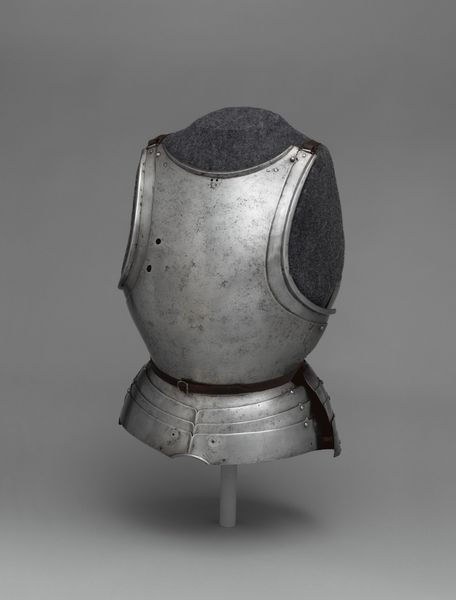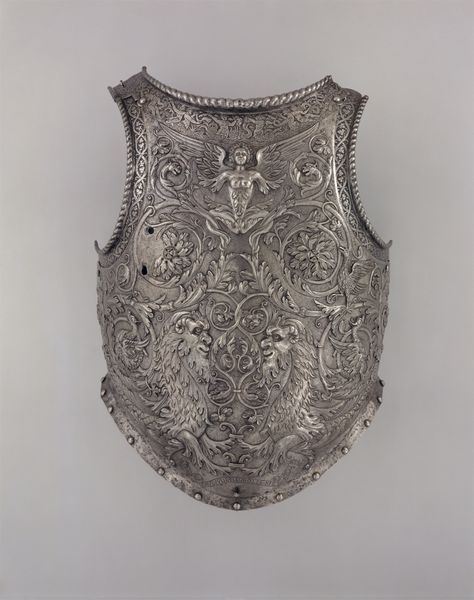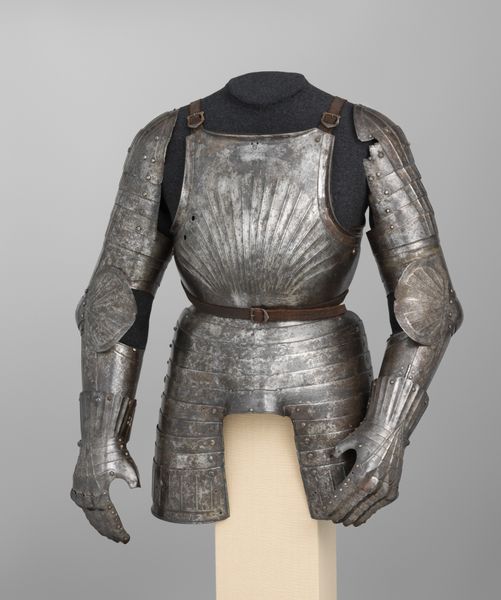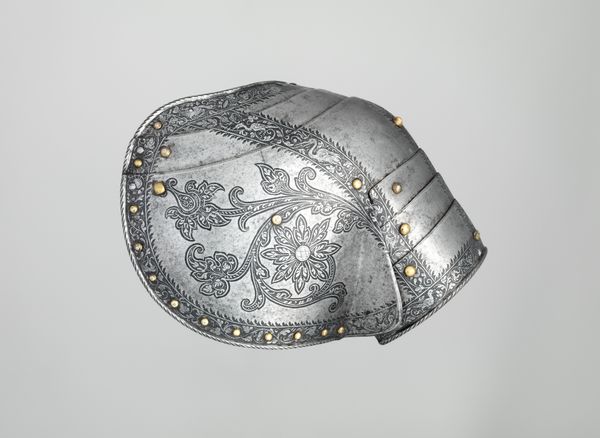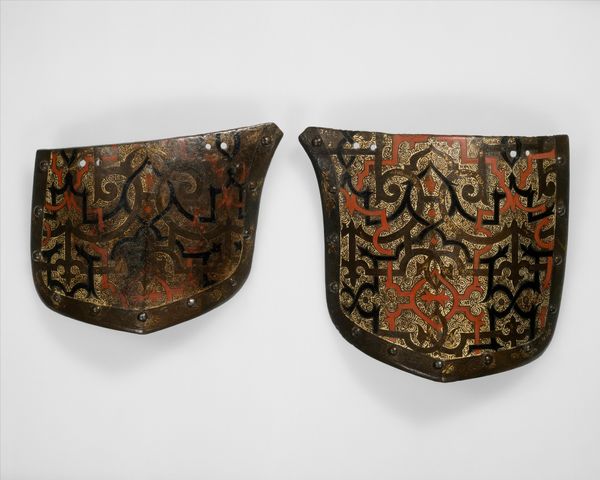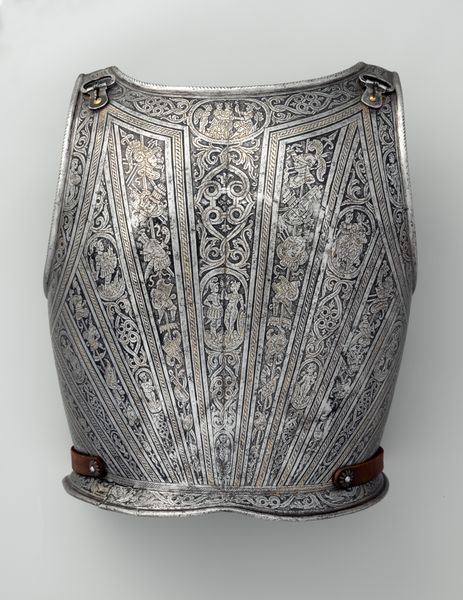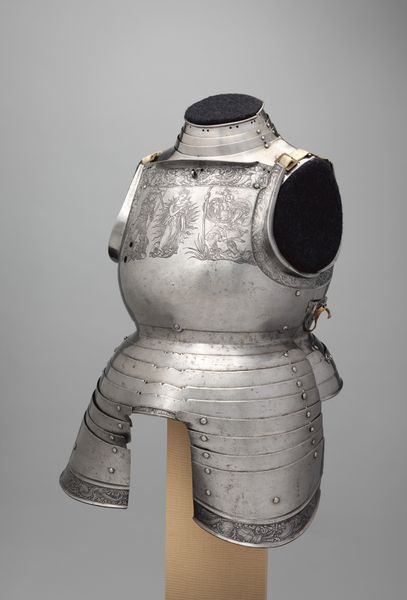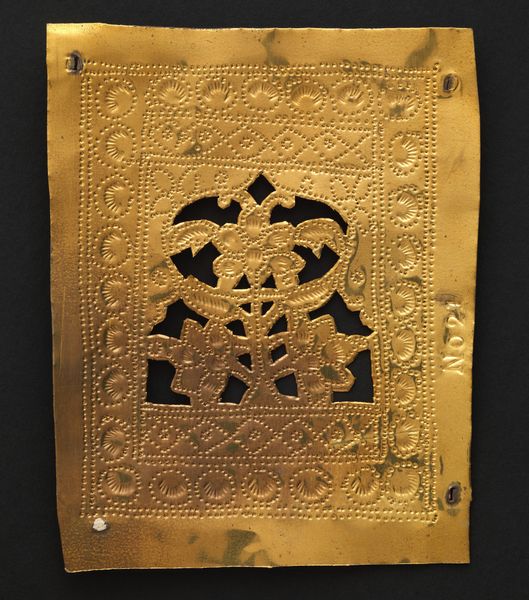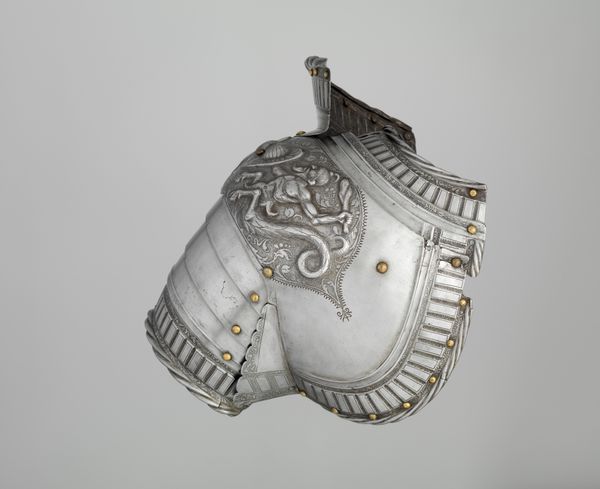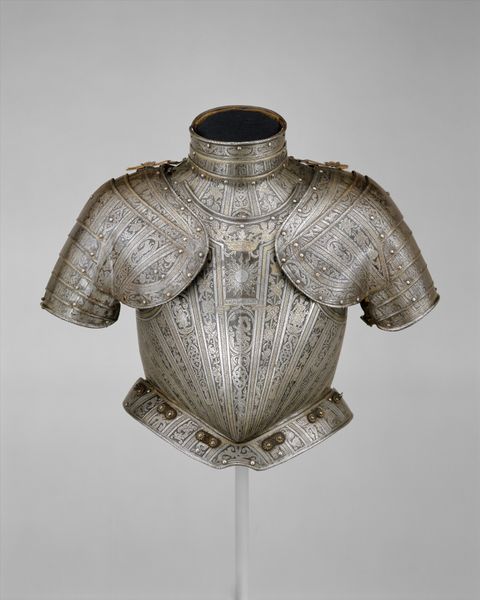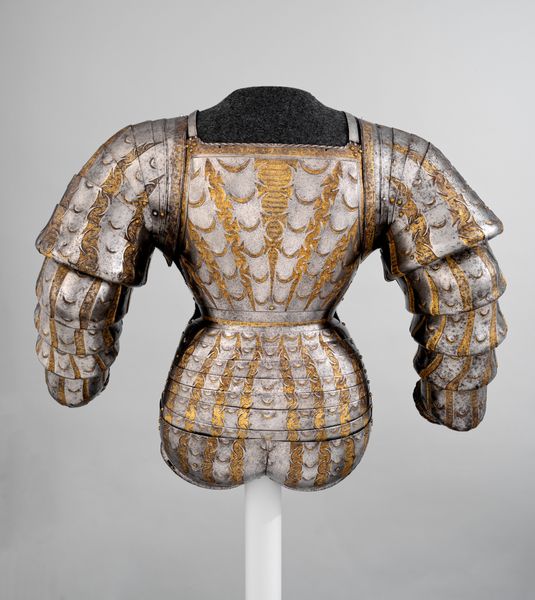
Cuirass 1820 - 1830
0:00
0:00
metal, gold
#
metal
#
gold
#
historical fashion
#
romanticism
#
france
#
history-painting
#
armor
#
decorative-art
Dimensions: H. 17 1/2 in. (44.5 cm); W. 14 1/8 in. (35.9 cm); D. 12 3/4 in. (32.4 cm); Wt. 12 lb. 2.2 oz. (5505.5 g); breastplate; H. 17 1/2 in. (44.5 cm); W. 14 1/8 in. (35.9 cm); D. 7 in. (17.8 cm); Wt. 8 lb. 0.5 oz. (3642.9 g); backplate; H. 16 15/16 in. (43 cm); W. 14 1/8 in. (35.9 cm); D. 5 3/4 in. (14.6 cm); Wt. 4 lb. 1.7 oz. (1862.6 g)
Copyright: Public Domain
This is a cuirass, or body armor, crafted by Coulaux Frères at the Manufacture Royale d'Armes de Klingenthal sometime between 1801 and 1836. Consider the social hierarchy embedded in this object. Armor was not merely protection; it was a symbol of status, reserved for the elite. The intricate decorations speak to a culture of valuing display as much as defense. Who wore this? What power did it signify? The weight of the metal, over twelve pounds, is a physical manifestation of the burdens and privileges carried by those in power. Think, too, of the artisans. Their skill transformed cold metal into a work of art, yet their names are often lost to history, overshadowed by those who commissioned and wore such pieces. This tension—between the visible power and the invisible labor—haunts the object. The cuirass remains a potent reminder of the complex interplay between identity, power, and the ever-present shadow of human conflict.
Comments
No comments
Be the first to comment and join the conversation on the ultimate creative platform.
